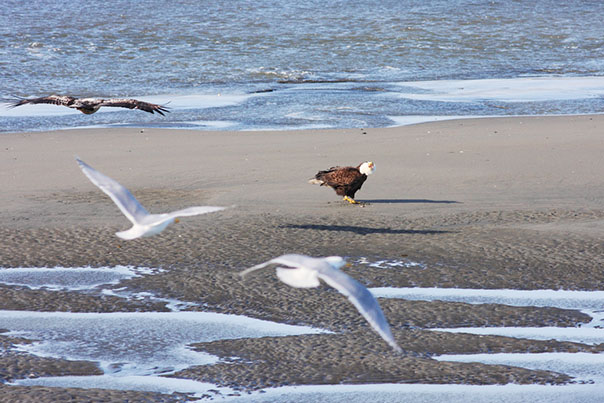June 27, 2014
Contacts: Gavin Shire (FWS), (703) 358-2649, gavin_shire@fws.gov Connie Barclay (NOAA), (301) 427-8003, connie.barclay@noaa.gov
The Department of the Interior’s U.S. Fish and Wildlife Service and the National Oceanic and Atmospheric Administration’s National Marine Fisheries Service today announced a new policy to clarify the interpretation of the phrase “significant portion of its range” in the Endangered Species Act as it applies to decisions to list species as threatened or endangered.
The policy will provide consistency in the application of the phrase, which appears in the Act’s statutory definitions of “endangered species” and “threatened species” butis not separately defined in the Act itself.
Under the new policy, the two services would be ableto list a species as threatened or endangered throughout its range if the best available science shows that the species is threatened or endangered in a vital portion of that range, the loss of which would put the species as a whole at risk of extinction. That portion of the range would be determined to be “significant.”
Specifically, the policy clarifies a species’ “range” as the geographical area within which that species is found at the time of the listing determination. The term “significant portion” is defined to mean a portion of that range whosecontribution to the viability of the species is so important that, without the individuals in it, the species as a whole would be in danger of extinction (meriting an endangered status), or likely to become so in the foreseeable future (meriting a threatened status).
The agencies emphasize that the “significant portion ofits range” definition will only come in to play under certain limited circumstances. If a species isdetermined to be endangered or threatened throughout all its range, it will be listed as such in its entirety without any further analysis of portions of that range. But if a species is determined to beneither endangered nor threatened throughout all its range and a subsequent analysis reveals it is endangered or threatened within a significant portion of that range, then the entire species will be listed as an endangered or threatened species accordingly.
While the Services expect this latter circumstance to arise infrequently, in cases where it does occur, this policy will allow ESA protections to help species in trouble before large-scale declines or threats occur throughout the species’ entire range.
For more detailed information on the policy, visit www.fws.gov/endangered/improving_ESA/SPR.html
NOAA’s mission is to understand and predict changes in the Earth’s environment, from the depths of the ocean to the surface of the sun, and to conserve and manage our coastal and marine resources. Visit us at http://www.noaa.govor on Facebook at http://www.facebook.com/usnoaagov. To learn more about the NOAA Fisheries Endangered Species program, go to http://www.nmfs.gov/pr.
The U.S. Fish and Wildlife Service works with others to conserve, protect, and enhance fish, wildlife, plants, and their habitats for the continuing benefit of the American people. For more information, visit www.fws.gov.



